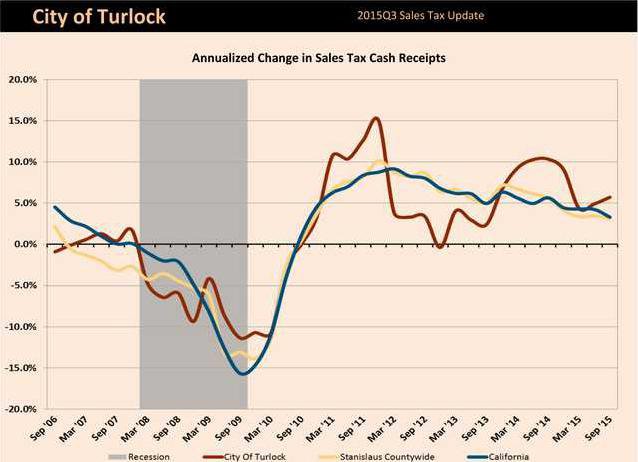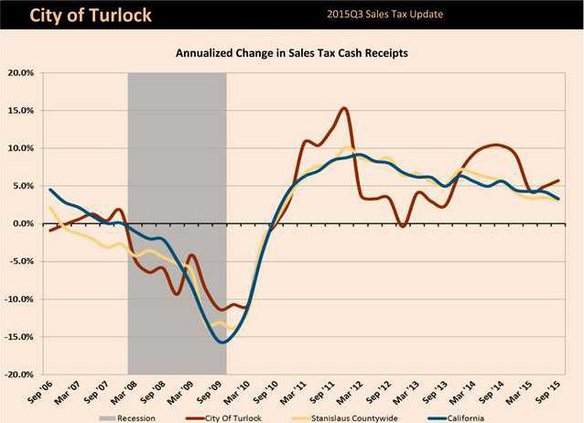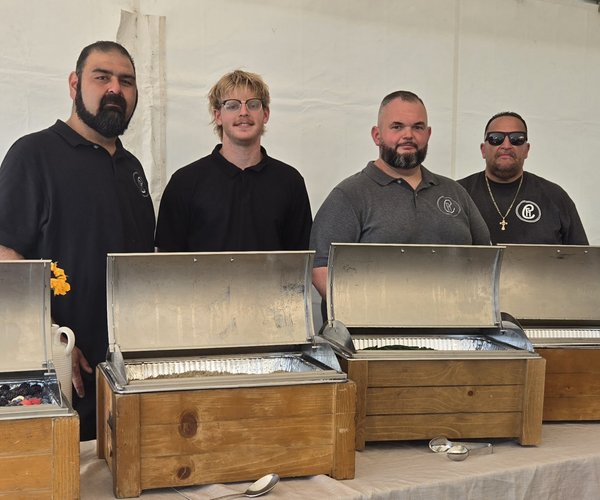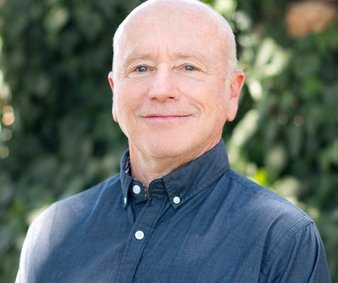There are a number of signs that Turlock is finally turning the corner on economic recovery. The downtown is bustling with shoppers and diners. New companies are breaking ground at the City's industrial park and longtime Turlock businesses are expanding their operations.
And all of this activity has meant a return to pre-recession sales tax revenue and historically high assessed property values for the City of Turlock.
The Stanislaus County Assessor recently announced that the 2016-17 Regular Assessment Roll total was a record $44,276,415,460 — an increase of more than $2,457,891,581 or 5.88 percent over the 2015-16 year’s roll total and exceeds the pre-recession record set in 2007-08 by $1,307,745,479.
The assessment roll, which includes more than 178,000 units of real property and business assessments, is the basis upon which property taxes are levied.
“The 2016-17 assessment roll will produce approximately $443 million in revenue that will be shared by public schools, the county, cities and special districts,” said Assessor Don Gaekle.
Gaekle attributes the increase to the continuing and steady recovery in the residential real estate market, new construction on residential and commercial-industrial land as well as improvement in segments of commercial and industrial properties that were reduced to market values below their Proposition 13 base values after the economic collapse of 2008-09.
Among cities, Turlock had the second largest increase at 8.63 percent, after Patterson at 8.79 percent.
Maryn Pitt, assistant to the city manager for housing and economic development, said the City's assessed values are rising due to a hot real estate market in Turlock and smart planning.
"Over the last several weeks, there have been no short sales, no foreclosures and all of the properties are up to their pre-Prop 8 property tax reduction," something that is quite remarkable, according to Pitt, who said Stanislaus County was one of the top 10 foreclosure counties in the country not too long ago.
"We also didn't overbuild prior to last recession," she said.
When property values in an area decline because of a declining real estate market, property tax assessors are obliged to conduct "decline in value reviews" to ensure that the tax assessed value of a property is set at a lower rate if the value of the property has declined. When a property is assigned a lower value as the result of such a review, this is known as a "Proposition 8 reduction."
New industrial and commercial projects — like Hilmar Cheese's milk processing plant and the Monte Vista Crossings south expansion in 2015, which included Dick's Sporting Goods, Joann Fabrics and Buffalo Wild Wings — also contributed to increased assessed property value in Turlock.
Again, Pitt credits the gradual development of new business property as key to Turlock's success, not "overbuilding all at one time."
Something more indicative of a recovering economy is the rise in sales tax revenue. Turlock saw an 8.4 percent increase in sales tax receipts in the third quarter of 2015 over the same time period in 2014, according to a report prepared for the City by MuniServices.
Pitt said that sales tax is back up to what it was in 2006, around $300 million.
"We still have a little of that flinch mode coming out of 2009," she said. "Property tax is one thing, it's much more stable than sales tax, which is the last to recover. It really is across the board back to where it was in 2006."
Pitt said the next component of economic recovery will be infill projects, building custom homes on vacant lots in existing neighborhoods across town or like the Turlock Assisted Care Center — a two-story 67,430 square foot building that will include a total of 82 assisted living apartments being built on E. Main Street at the site of the former Sutter Gould Medical office.
"We're starting to see people do infill lots. Those kind of projects are one house at a time."






